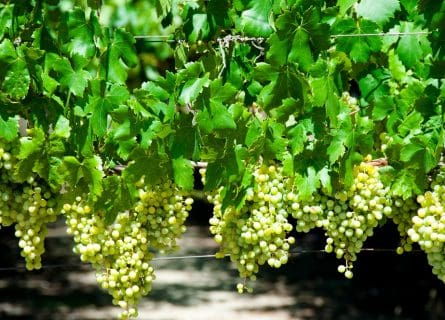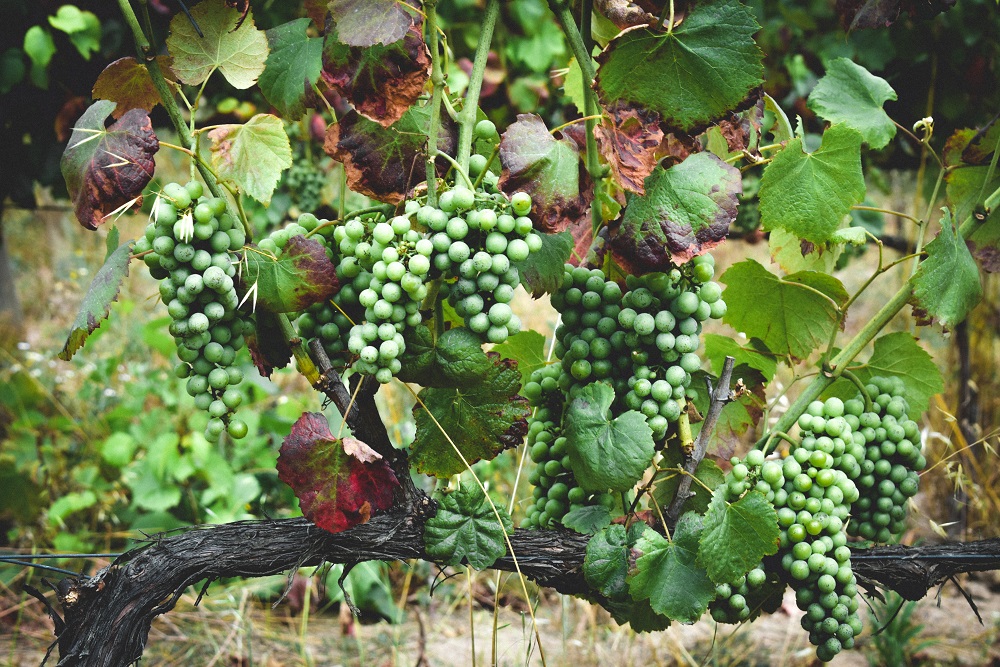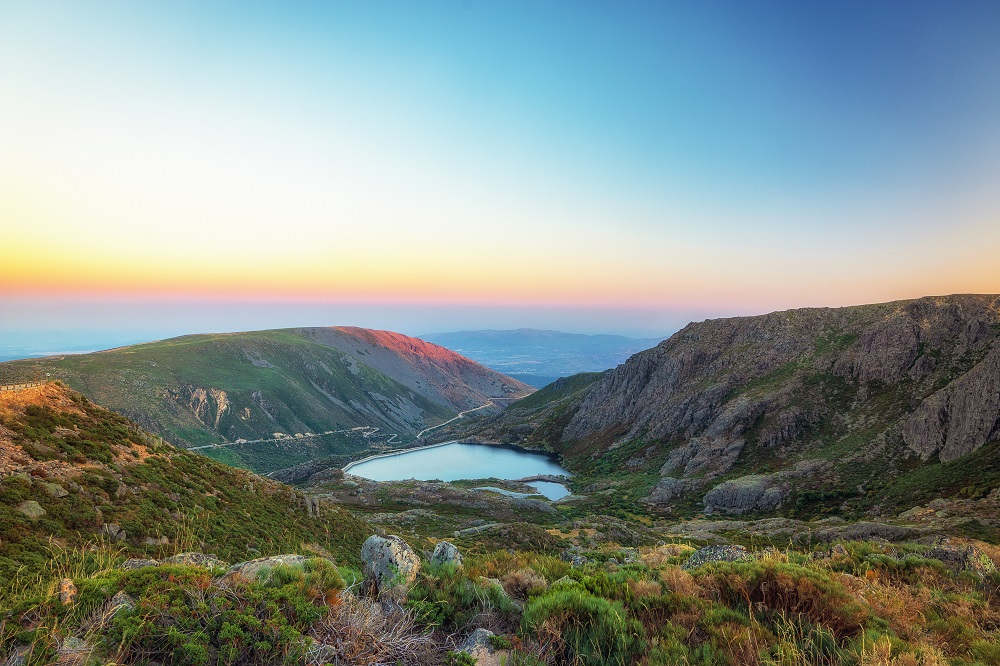
Verdelho Grape Variety: the Magic of Madeira
March 8, 2023
Uncover the history and unique characteristics of Verdelho, a lesser-known grape variety used to make fortified wines.
By: James lawrence / Last updated: February 3, 2025
Estimated reading time: 8 minutes
Now, this is a conundrum. How can one of Europe’s most obscure grape varieties be a Portuguese legend? Cercial, also known as Cerceal, rarely appears on wine labels. Neither does the grape command much attention in sommelier circles: the vast majority of Cercial ‘disappears’ into a well-crafted blend of indigenous Portuguese white varieties. Its global cachet is on par with Austria’s Rotgipfler. Famous it is not.

Guide to Portuguese White Wine: Read more
Nevertheless, Cercial is, and always has been, vitally important to the winegrowing communities of Bairrada, Dão, and Tejo. This is for one simple reason: acidity. In the warm climate of southern Europe, this valuable commodity can make or break a vintage – certain varieties cannot cope with the intense summer heat common to central Portugal. Yet Cercial, ever-robust and hardy, can. It has been used for centuries to bolster the acidity of white wines that would otherwise veer dangerously close to flabbiness. In truth, many wine producers would be stuck without it!
Dão is a quintessential Portuguese vineyard. The landscape, soils, and indigenous varieties scream ‘viva Portugal! It is also one of the country’s oldest winegrowing areas; Phoenician traders first introduced Cercial (and other) vines to the region, a practice enthusiastically adopted by the Romans after they conquered the Iberian Peninsula in the 3rd Century BC. Their dramatic impact on Spain and Portugal’s social, political, and cultural life is still in evidence. Indeed, the Western Empire endured for over 600 years, transforming the lives of millions of people. A quarter of the world’s population lived and died under Roman rule.
However, it all fell apart in 476 AD. Barbarian tribes poured into Rome, and the empire’s authority collapsed almost overnight. This left a significant political vacuum that rival powers were only too happy to fill. The Visigoths eventually established a capital in Toledo, although this was to prove a most ephemeral power grab. Then, in 711, the Moorish leader Tariq landed his forces in southern Spain. Within less than five years, the Moors controlled almost all of Spain and Portugal, with the exception of Asturias and other northern regions.
Their legacy is still evident today, particularly in the Andalusian cities of Cordoba and Granada – the Alhambra remains one of Europe’s greatest architectural masterpieces. Yet the displaced Christians of Spain were not content to sit idly by and do nothing. Thus, the rebellions against Moorish rule started in the 11th century; the marriage of Fernando of Aragon and Isabel of Castile led to Spanish unity. Prior to that defining moment in 1469, the monarch Henriques granted Portugal independent rule from mainland Spain. He subsequently recaptured the city of Lisbon with some help from English knights who had joined the crusade. Meanwhile, the Catholic Monarchs took Granada, the last Moorish stronghold, in 1492. That same year, Columbus discovered the Americas, and the conquistadors of Spain and Portugal began colonizing the New World.
The 17th century was a golden age for Portugal – a time of rapid economic growth and outstanding architectural output. This brilliance occurred, however, against a backdrop of political turmoil and a 60-year occupation by the forces of Spain. Unfortunately, the loss of Brazil only exacerbated Portugal’s economic woes, a situation not helped by Napoleon’s invasion during the Peninsula War. Yet, from the perspective of winegrowers in the Dão region, the 1800s were a time of positive change. During this period, the aristocrat and winemaker João de Sacadura Botte Côrte-Real embarked upon a radical modernization program, transforming the region’s viticulture and winemaking. As a result, Dão was recognized as a ‘Região Demarcada’ (Demarcated Region) in 1908.
Unfortunately, António de Salazar’s ascent to power in the 20th century set the region’s progress back about a hundred years. A military dictator, Salazar was not the most imaginative of economic thinkers! In the 1940s, he decreed that co-operatives, rather than family-run estates, should exclusively manage Dão’s industry. This was highly detrimental to quality, as the co-ops exploited an opportunity to make a quick buck out of indifferent dross. Yet, when Portugal joined the EU in 1979, everything changed. Private enterprise flourished (encouraged by EU business regulations), and investment poured into the region. They brought new equipment, international capital, and soaring quality.
But, unlike many parts of central Italy, the Portuguese have never welcomed great swathes of international varieties into their vineyards. And so, Cercial remains as important to the wine industries of north-central Portugal as it was during the heyday of the 1800s. Blended with red and white grapes (including Baga), Cercial is relatively easy to grow. Indeed, this high-acid grape has only one major drawback: its tendency to crop at high yields. Fortunately, this is quite straightforward to remedy with a judicious pruning regime throughout the growing season.
In the increasingly frequent hot vintages of central and southern Portugal, Cercial can be indispensable, for few grape varieties can maintain such piercing acidity at high levels of sugar ripeness. It is for that reason that winegrowers across the country cherish Cercial. Some use the grape to add zest and zip to their sparkling wines – others prefer to blend Cercial to produce a still, dry white. Occasionally, you’ll come across an excellent example of a mono-varietal wine. But, for the most part, Cercial is part of an ensemble drama.
It is also handled in very different ways. When producing Cercial wines for blending, the overriding aim is to maintain the wine’s freshness at all costs, protecting the juice from oxidation during each stage of the vinification. This involves a tried and tested formula popularized the world over. Hand-harvested grapes are chilled, possibly crushed, and then pressed to release very pure must that is drained into a settling tank. This is usually chilled at this point to preserve freshness and encourage solid material (remnants of the pulp and skins) to fall to the bottom. This juice may also be filtered or even passed through a centrifuge at this point, although certain winemakers believe centrifuging can strip a wine of its nuance – and character.
However, (almost) everyone agrees that stainless steel is a proven and reliable vessel used to produce aromatic dry styles in regions across Europe. Many of Portugal’s best white wines are ‘made’ in stainless steel, fermented at low temperatures to bring out every last ounce of aroma and flavor. Yet Cercial can benefit from exposure to French barrique if done with care and discretion. For example, the oenologist at Quinta de Foz de Arouce vinifies a small percentage of their wines in 20% one-year-old barrels, while the remainder is fermented in two-year-old barrels. The wine is then matured in barrique for seven months, with regular batonnage. It is a delicious drop: a rare example of a mono-varietal Cercial wine. Our advice is to snap it up!
Unlike Antão Vaz, Cercial is seldom given the opportunity to stretch its wings as a single-varietal expression. But that doesn’t mean that this obscure grape produces indifferent wine. Quite the opposite: Cercial can taste like a good vintage of Chablis, particularly if you focus on the wine’s minerality, racy acidity, and taut body. The bouquet will very often showcase notes of stone fruit and citrus, evolving into tertiary flavors of butter, honey, and fennel as the wine matures in bottle. It is, in every sense of the word, delicious.

Nonetheless, Cercial is, first and foremost, a blending grape in the vineyards of Portugal. Until the 1990s, the Dão region was widely associated with aggressively tannic red wines – the local co-operatives clumsily handled the Baga grape in the mid-20th century. Today, however, it all looks very different. Named after the Dão River, the region is a hotbed of innovation and excitement, with a dizzying range of indigenous white grapes to play with. Since the 20th century, independent producers have grown exponentially in Dão, drawn to the exceptional terroir. They continue to plant new vineyards on what is basically an expansive granite plateau; some schist and sand can also be found.
All agree that the most valued sites are located on the foothills of the Serra da Estrela, planted at elevations of 700-800 meters above sea level. This marked diurnal temperature variation (combined with the long growing season) produces some of Portugal’s most structured and fresh whites, inevitably built around a blend of Bical, Cercial, and Encruzado. If you’re inclined, you can enjoy these bottles in their youth and age for at least ten years. Indeed, it is this affinity for the cellar, in reds as well as whites, that characterizes Dão. Nevertheless, the region’s potential for exceptional table wines has always been clear. Now, that message is starting to disseminate beyond the borders of the Tejo.
If you would like us to customize an exclusive luxury tour, contact us and let us know your travel plans. We offer luxury food and wine tours for private groups of a minimum two guests. In addition, all of our private, chauffeured tours are available year-round upon request.

